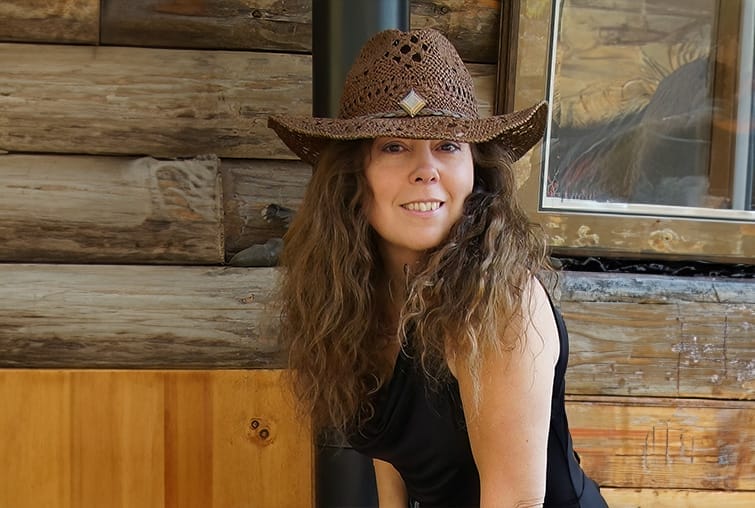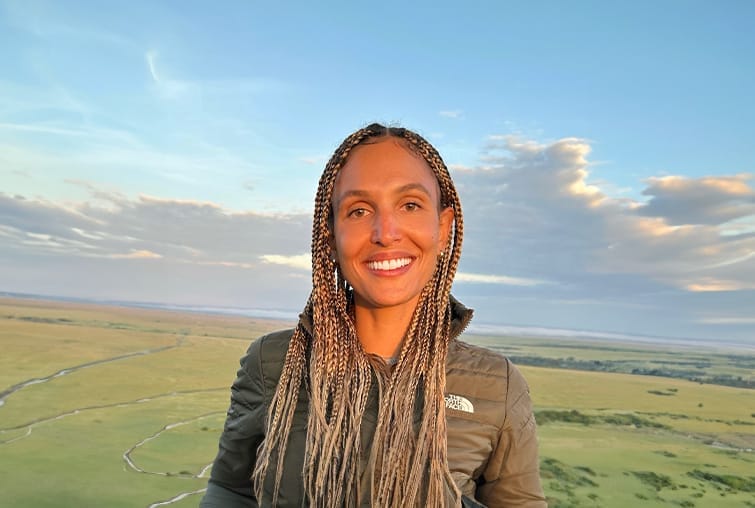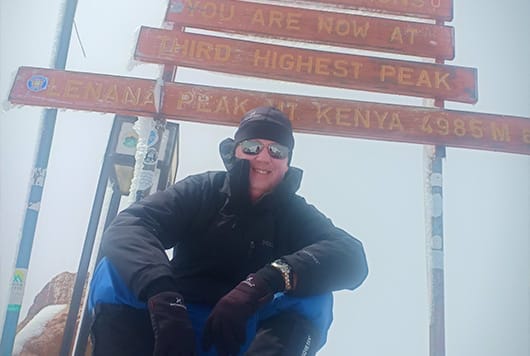Nyerere National Park (Selous Game Reserve)
Selous Game Reserve is the largest wildlife reserve in Africa – 50,000 sq km (19,293 sq miles) and covers more than 5% of Tanzania and is primarily known for its elephant population. Created in 1896 and gazetted in 1905 the park is named after the British explorer and conservationist Frederick Courtney Selous and a small stone marks the spot where he is buried in the reserve.
The Selous has been the centre of several historical events beginning with the find of stone implements belonging to prehistoric man. Much of the history of German East Africa was played out in this area and prior to that was known as a popular route with slave and ivory traders of which there is tangible evidence of the routes.
Due to its remote location, and because it is most easily accessed by light aircraft from Arusha or by road from Dar es Salaam, the Selous has remained one of the untouched gems of East Africa’s wildlife reserves.
The area is mainly brachystegia woodland with grassy flood-plains and some dense ground water forest patches and rocky outcrops, much of it is inaccessible. Its ecosystem comprises the reserve and surrounding unpopulated land. The woodland is dry and harsh making it difficult to photograph and although it may appear uninviting, patient observation reveals the natural beauty of the area. The lifeblood of the park is the Rufiji river which is the largest water catchment in the region, and as such, is home to a plethora of varied water and birdlife.
In the dry season an ancient migration of elephants takes place between the Selous and Mozambique’s Niassa Game Reserves. At the last count it was estimated that 64,000 elephants roam between the two parks. Additionally the Selous has the worlds largest concentration of hippopotamuses and crocodiles. Other animals include leopard, wild dogs, greater kudu, sickle horned sable antelopes, waterbuck, reed buck to name just a few.
The Selous is unique among Tanzania’s more well known wildlife areas because it is a reserve, not a national park, and therefore a larger range of activities are permitted. Boating safaris, escorted walks and hiking safaris all add a bit of adventure to the safari.
The soil in the Selous is primarily black cotton soil making it virtually impassable during the rainy season between March and May and most of the lodges are closed at this time. The best time of the year to visit is between June to November when elephants come out of the thick bush to the rivers and predators are more commonly seen. January to April is wonderful for birdlife. December to February is also good for wildlife viewing.
The Selous has been the centre of several historical events beginning with the find of stone implements belonging to prehistoric man. Much of the history of German East Africa was played out in this area and prior to that was known as a popular route with slave and ivory traders of which there is tangible evidence of the routes.
Due to its remote location, and because it is most easily accessed by light aircraft from Arusha or by road from Dar es Salaam, the Selous has remained one of the untouched gems of East Africa’s wildlife reserves.
The area is mainly brachystegia woodland with grassy flood-plains and some dense ground water forest patches and rocky outcrops, much of it is inaccessible. Its ecosystem comprises the reserve and surrounding unpopulated land. The woodland is dry and harsh making it difficult to photograph and although it may appear uninviting, patient observation reveals the natural beauty of the area. The lifeblood of the park is the Rufiji river which is the largest water catchment in the region, and as such, is home to a plethora of varied water and birdlife.
In the dry season an ancient migration of elephants takes place between the Selous and Mozambique’s Niassa Game Reserves. At the last count it was estimated that 64,000 elephants roam between the two parks. Additionally the Selous has the worlds largest concentration of hippopotamuses and crocodiles. Other animals include leopard, wild dogs, greater kudu, sickle horned sable antelopes, waterbuck, reed buck to name just a few.
The Selous is unique among Tanzania’s more well known wildlife areas because it is a reserve, not a national park, and therefore a larger range of activities are permitted. Boating safaris, escorted walks and hiking safaris all add a bit of adventure to the safari.
The soil in the Selous is primarily black cotton soil making it virtually impassable during the rainy season between March and May and most of the lodges are closed at this time. The best time of the year to visit is between June to November when elephants come out of the thick bush to the rivers and predators are more commonly seen. January to April is wonderful for birdlife. December to February is also good for wildlife viewing.
Nyerere National Park Accommodation
Talk to a Specialist
Choose a Safari Specialist in your time zone and start planning your tailor-made safari to Tanzania.

Julie Roggow
Julie Roggow
Greetings, I'm Julie Roggow, and I come to you with over two decades of immersion in the world of travel. My journey into the heart of safari adventures began as I traversed Kenya, Uganda, Tanzania, Rwanda, Botswana, Zimbabwe, and South Africa, capturing the essence of these mesmerizing landscapes through my lens. Among these remarkable destinations, Kenya and the Porini safari camps hold a special place in my heart. Their unique blend of wilderness and conservation resonates deeply with me.
My passion for travel is matched only by my dedication to sharing that passion with others. I'm here to ensure that planning your safari vacation is an enjoyable and seamless experience.
Feel free to reach out to me by email at julie@gamewatchers.com or through our toll-free telephone line at +1-877-710-3014.
Rick McIntyre
Hello, I'm Rick, based in Ontario, Canada, with over 15 years in the travel industry and a passport filled with stamps from over 70 countries. My heart was captured by Africa during my first visit to Kenya, and since then, I've journeyed back repeatedly, exploring the diverse landscapes and wildlife of Kenya, Tanzania, Rwanda, Zambia, Zimbabwe, Botswana, Namibia, and South Africa. Whether you're dreaming of a "once in a lifetime" vacation or you're a seasoned safari traveler, I'm here to assist in planning your perfect African adventure.
You can contact me at rick@gamewatchers.com or give me a call at +1-877-710-3014.

Rachel Chambers
You can contact Rae at rae@gamewatchers.com

Julie Roggow
Julie Roggow
Greetings, I'm Julie Roggow, and I come to you with over two decades of immersion in the world of travel. My journey into the heart of safari adventures began as I traversed Kenya, Uganda, Tanzania, Rwanda, Botswana, Zimbabwe, and South Africa, capturing the essence of these mesmerizing landscapes through my lens. Among these remarkable destinations, Kenya and the Porini safari camps hold a special place in my heart. Their unique blend of wilderness and conservation resonates deeply with me.
My passion for travel is matched only by my dedication to sharing that passion with others. I'm here to ensure that planning your safari vacation is an enjoyable and seamless experience.
Feel free to reach out to me by email at julie@gamewatchers.com or through our toll-free telephone line at +1-877-710-3014.
Rick McIntyre
Hello, I'm Rick, based in Ontario, Canada, with over 15 years in the travel industry and a passport filled with stamps from over 70 countries. My heart was captured by Africa during my first visit to Kenya, and since then, I've journeyed back repeatedly, exploring the diverse landscapes and wildlife of Kenya, Tanzania, Rwanda, Zambia, Zimbabwe, Botswana, Namibia, and South Africa. Whether you're dreaming of a "once in a lifetime" vacation or you're a seasoned safari traveler, I'm here to assist in planning your perfect African adventure.
You can contact me at rick@gamewatchers.com or give me a call at +1-877-710-3014.

Rachel Chambers
You can contact Rae at rae@gamewatchers.com

Julie Roggow
Julie Roggow
Greetings, I'm Julie Roggow, and I come to you with over two decades of immersion in the world of travel. My journey into the heart of safari adventures began as I traversed Kenya, Uganda, Tanzania, Rwanda, Botswana, Zimbabwe, and South Africa, capturing the essence of these mesmerizing landscapes through my lens. Among these remarkable destinations, Kenya and the Porini safari camps hold a special place in my heart. Their unique blend of wilderness and conservation resonates deeply with me.
My passion for travel is matched only by my dedication to sharing that passion with others. I'm here to ensure that planning your safari vacation is an enjoyable and seamless experience.
Feel free to reach out to me by email at julie@gamewatchers.com or through our toll-free telephone line at +1-877-710-3014.
- 1
- 2
- 3

Wayne Hammond
Wayne Hammond
Hello, I'm Wayne Hammond, and I'm fortunate to have embarked on over 30 incredible journeys to the enchanting continent of Africa. It's a place that has captured my heart time and time again. My travels have taken me to Kenya, which I've had the pleasure of visiting far more times than I can recall, as well as to Tanzania, Zimbabwe, Zambia, Botswana, Rwanda, Uganda, South Africa, and Mozambique. Among my cherished bush haunts, I hold dear the Masai Mara in Kenya, the mesmerizing Mana Pools in Zimbabwe, and the wondrous South Luangwa National Park in Zambia. I'm not just a passionate traveler but also an avid amateur wildlife photographer and an occasional travel writer.
If you're ready to embark on your own African adventure, don't hesitate to reach out to me at wayne@gamewatchers.com or give me a call at +44 7986 978 985.
Andrea Landaeta
Hola, I’m Andrea and my love affair with the captivating world of safaris began during my teenage years when I embarked on my very first safari in Kenya. There, amidst the awe-inspiring wildlife and expansive plains, I found my true passion. Over the years, Kenya has called me back time and time again, leading me to explore its myriad camps, conservancies, and renowned parks. More recently, I've had the privilege of staying at all the Porini Camps, where the spotlight shines on wildlife conservation—a cause close to my heart as I traverse the globe. While Kenya holds a special place in my wanderlust-filled heart, Tanzania, Uganda, and Rwanda have also woven their magic into my soul. If you're eager to embark on your own safari adventure or share your passion for conservation, please feel free to contact me at andrea@gamewatchers.com
Let's connect and embark on a journey through Africa's wild wonders together.
Pranay Chandra
Hello, I’m Pranay Chandra, a veteran of the Indian Armed Forces whose profound passion for nature and wildlife led me to the world of wildlife photography. My lens has captured the essence of the wild, earning recognition in esteemed competitions like the Sanctuary Asia annual wildlife awards and the Natural History Museum’s Wildlife Photographer of the Year awards. Beyond photography, I’ve dedicated myself to conservation efforts, collaborating with Ecological Task Forces and supporting WWF India’s training initiatives in tiger reserves. In the realm of education, I’ve partnered with CEC, New Delhi, to create informative video programs on Human-Wildlife Conflicts. I’ve ventured to Kenya, embracing the splendours of Africa while staying at Porini camps and other renowned lodges.
You can connect with me via email at pranay@gamewatchers.com or by phone at +91 801 788 5256

























